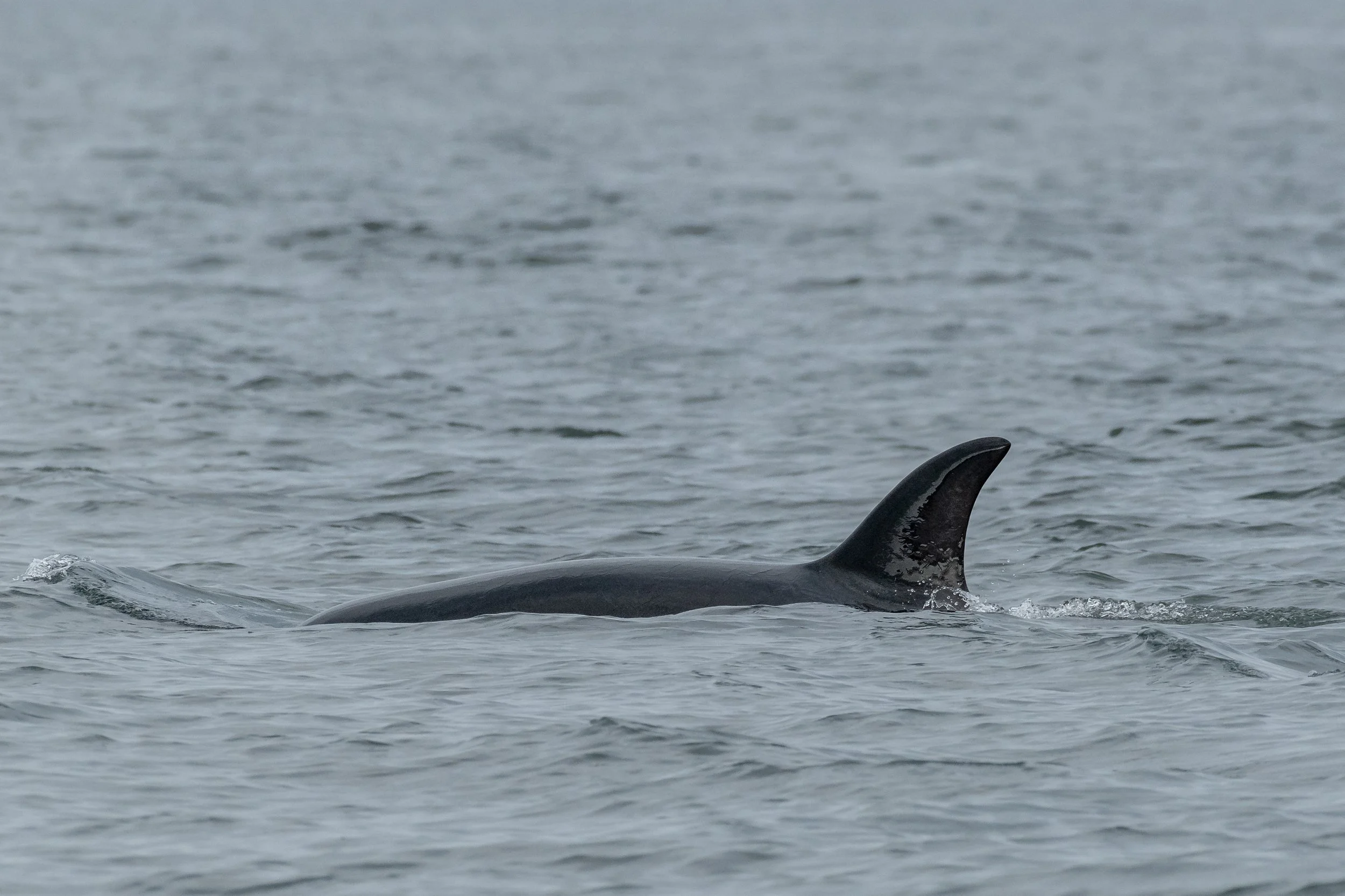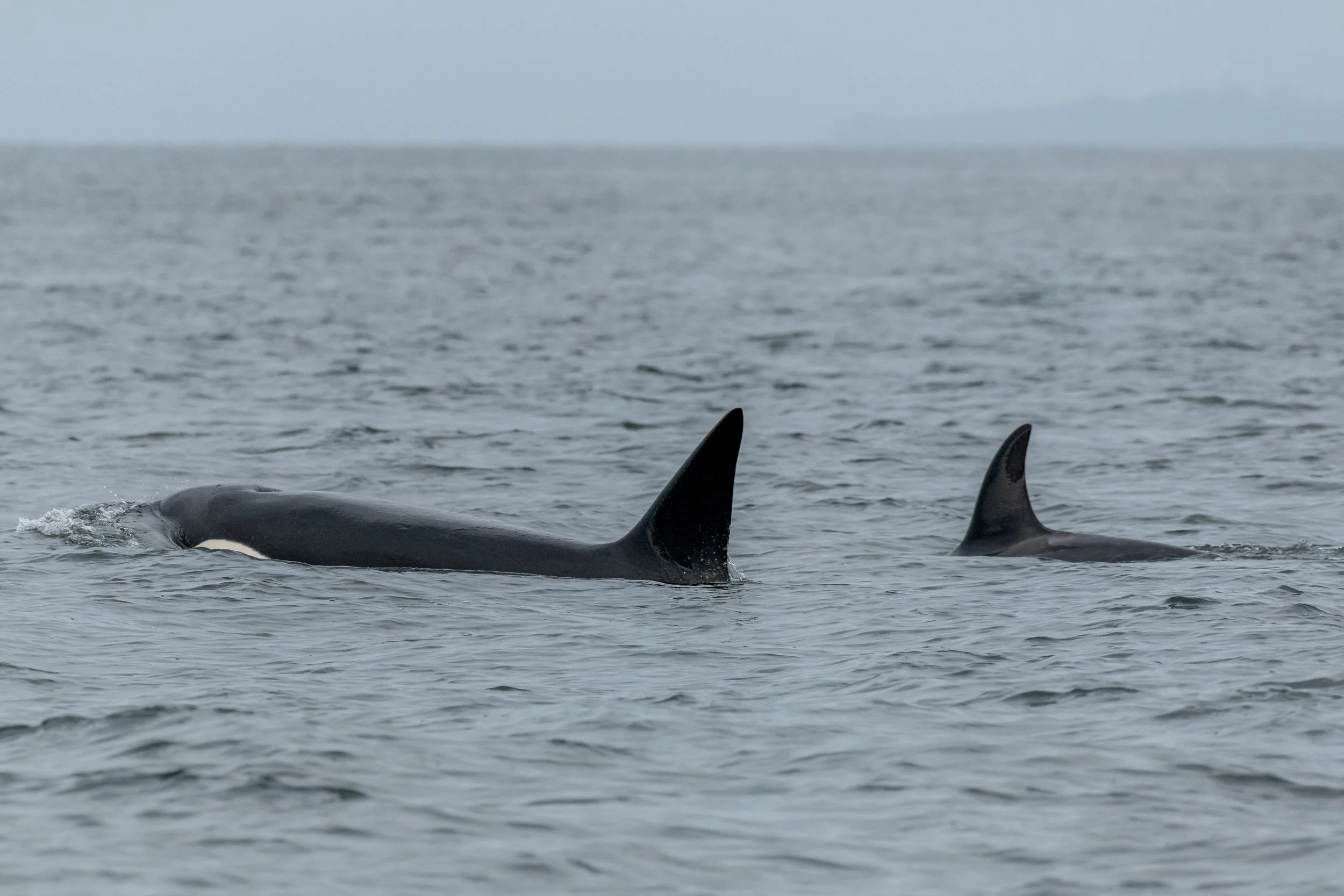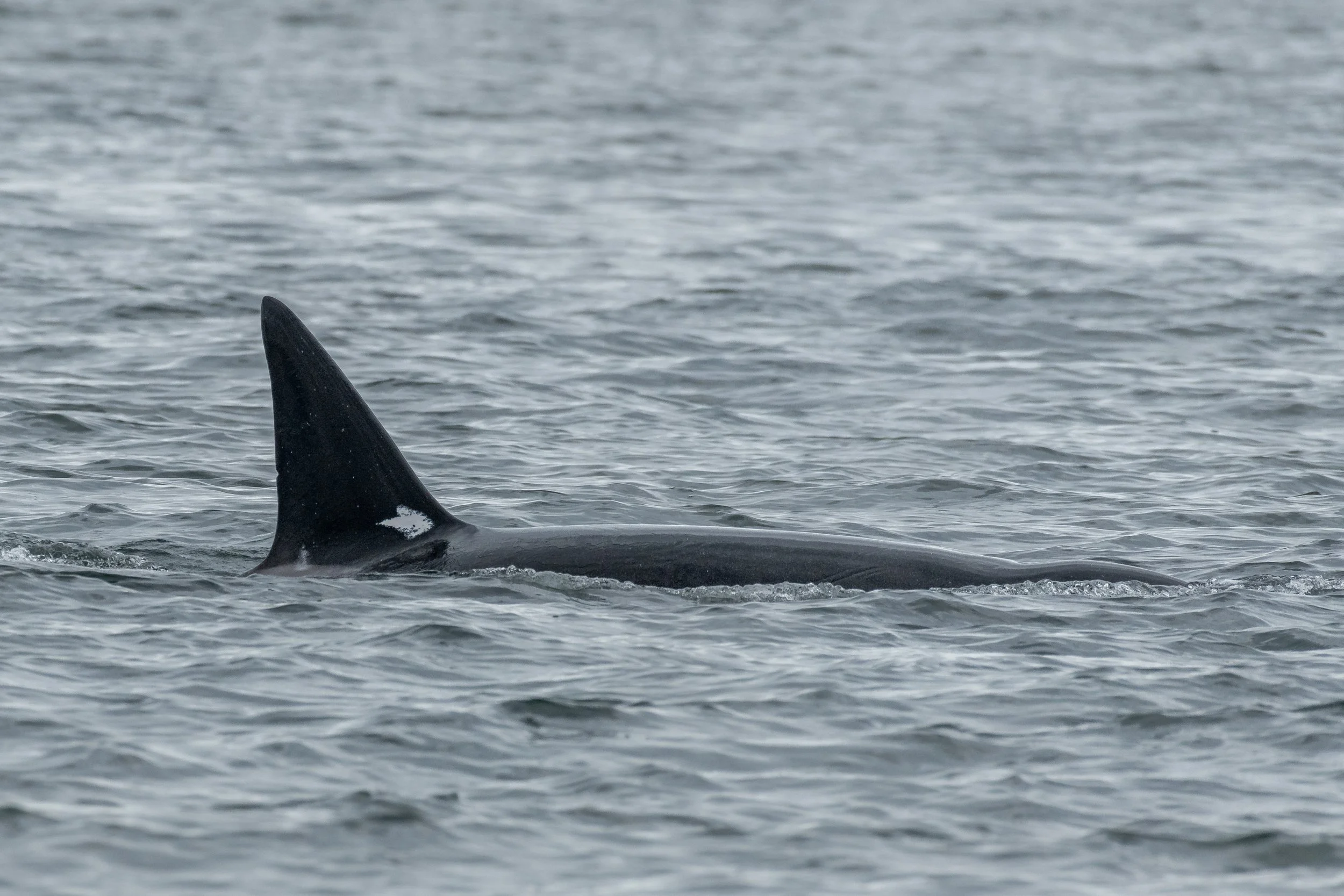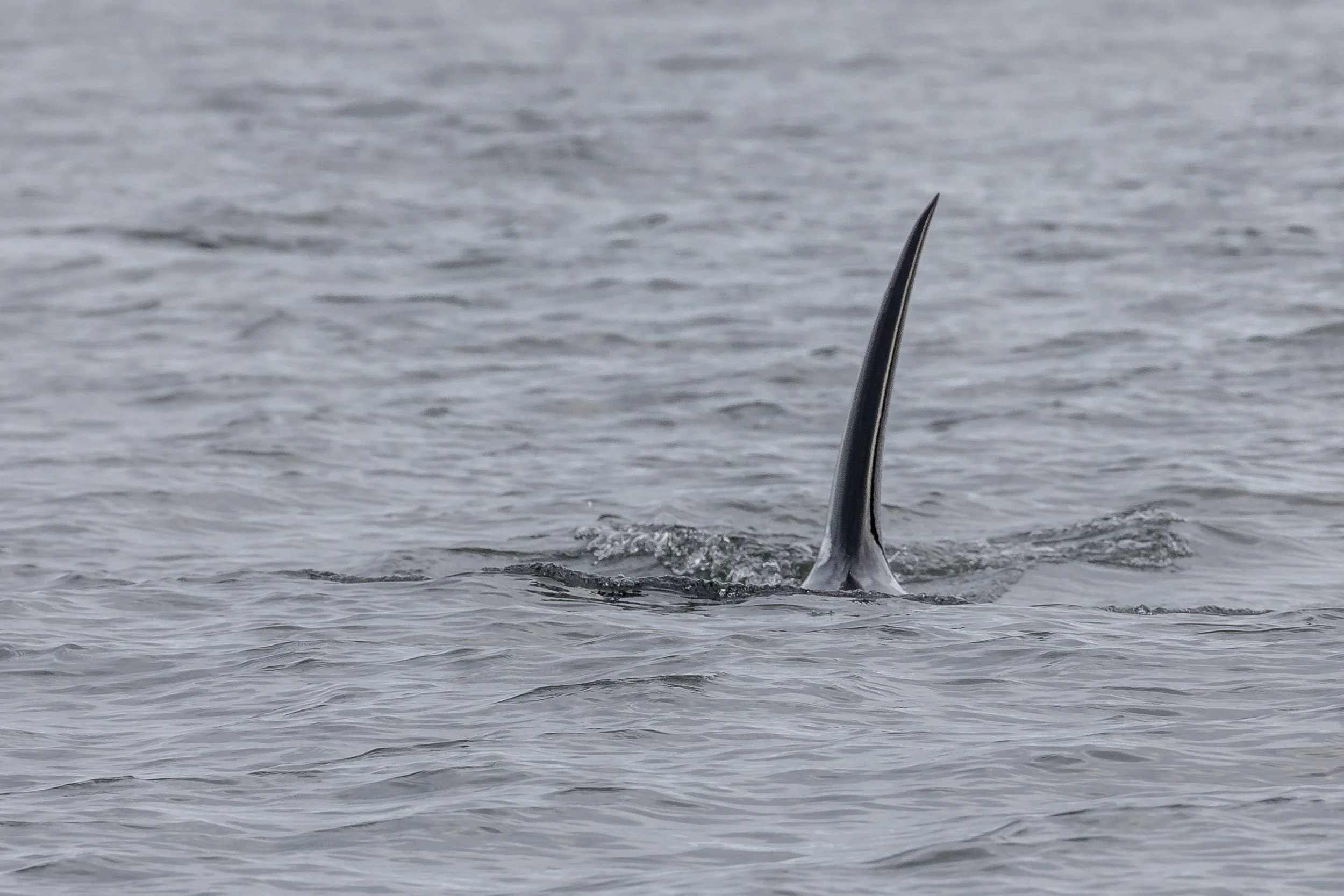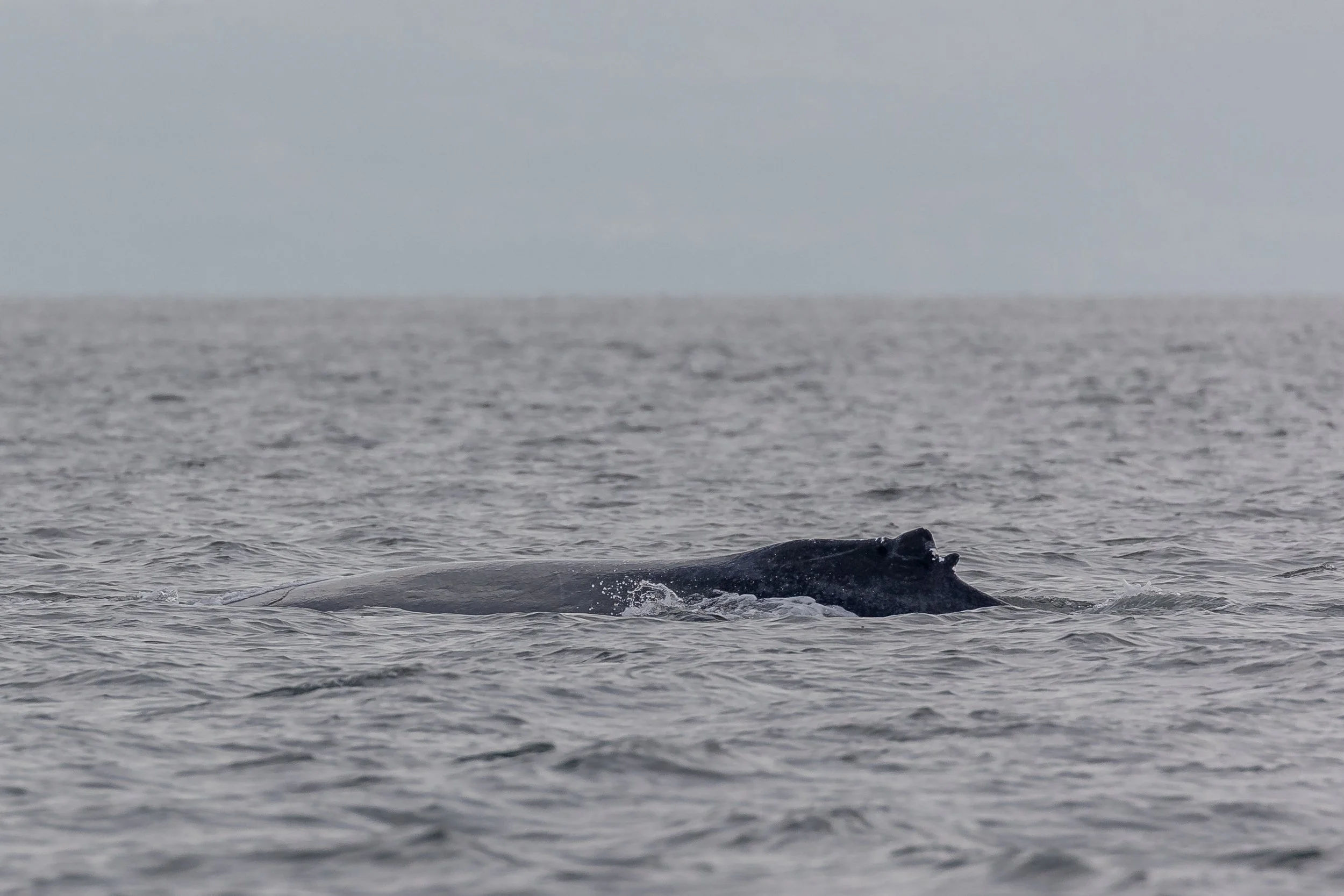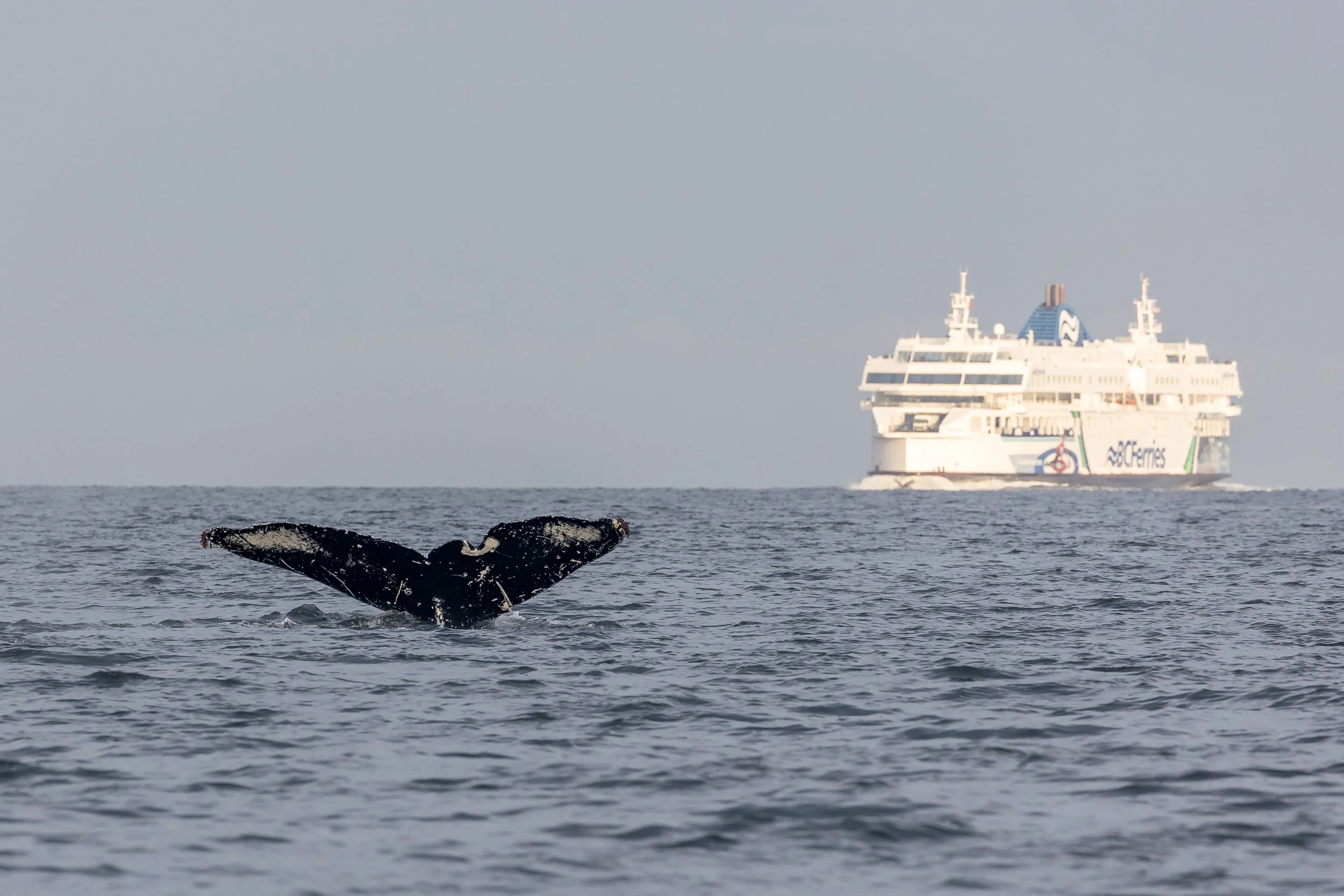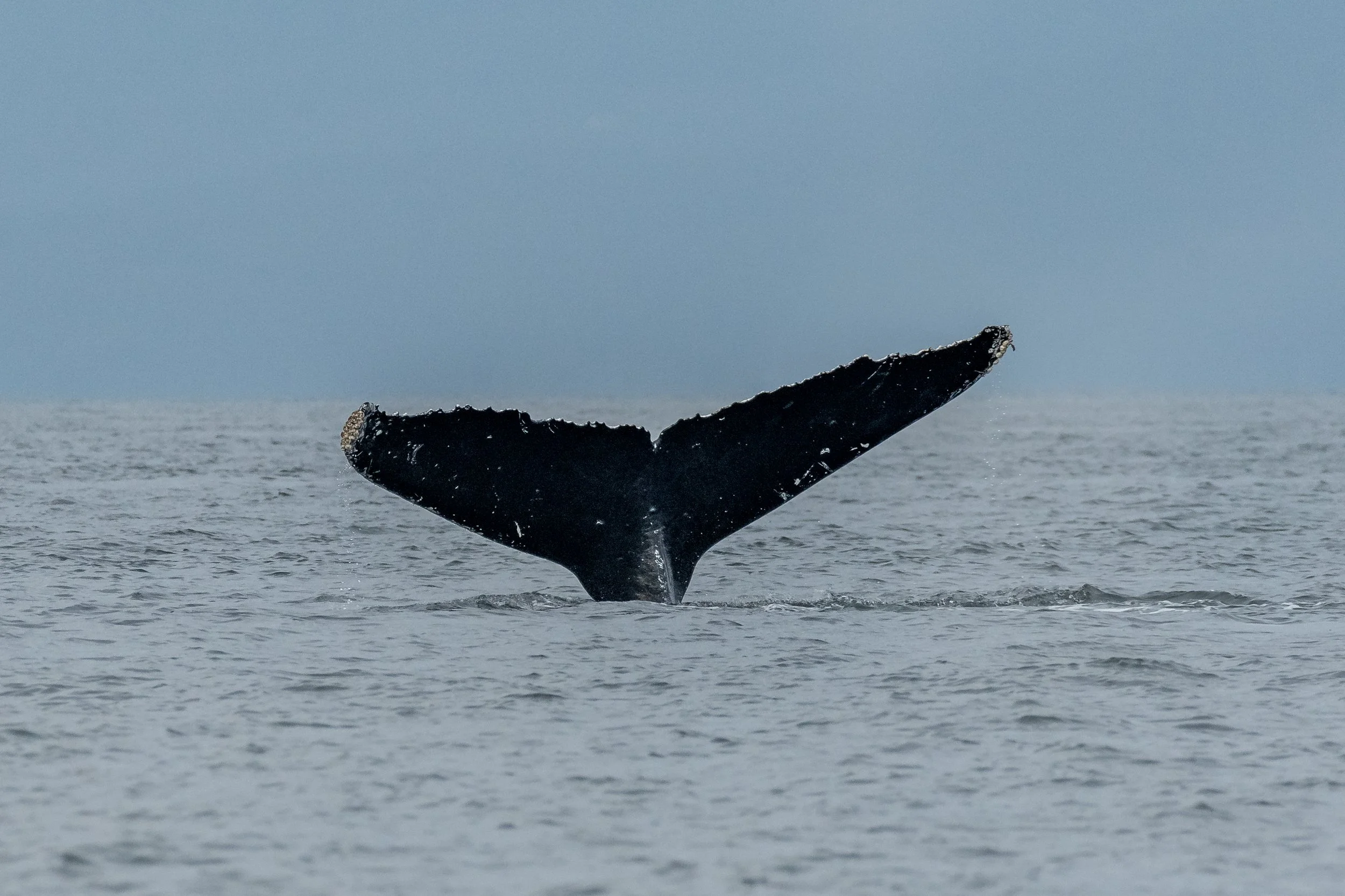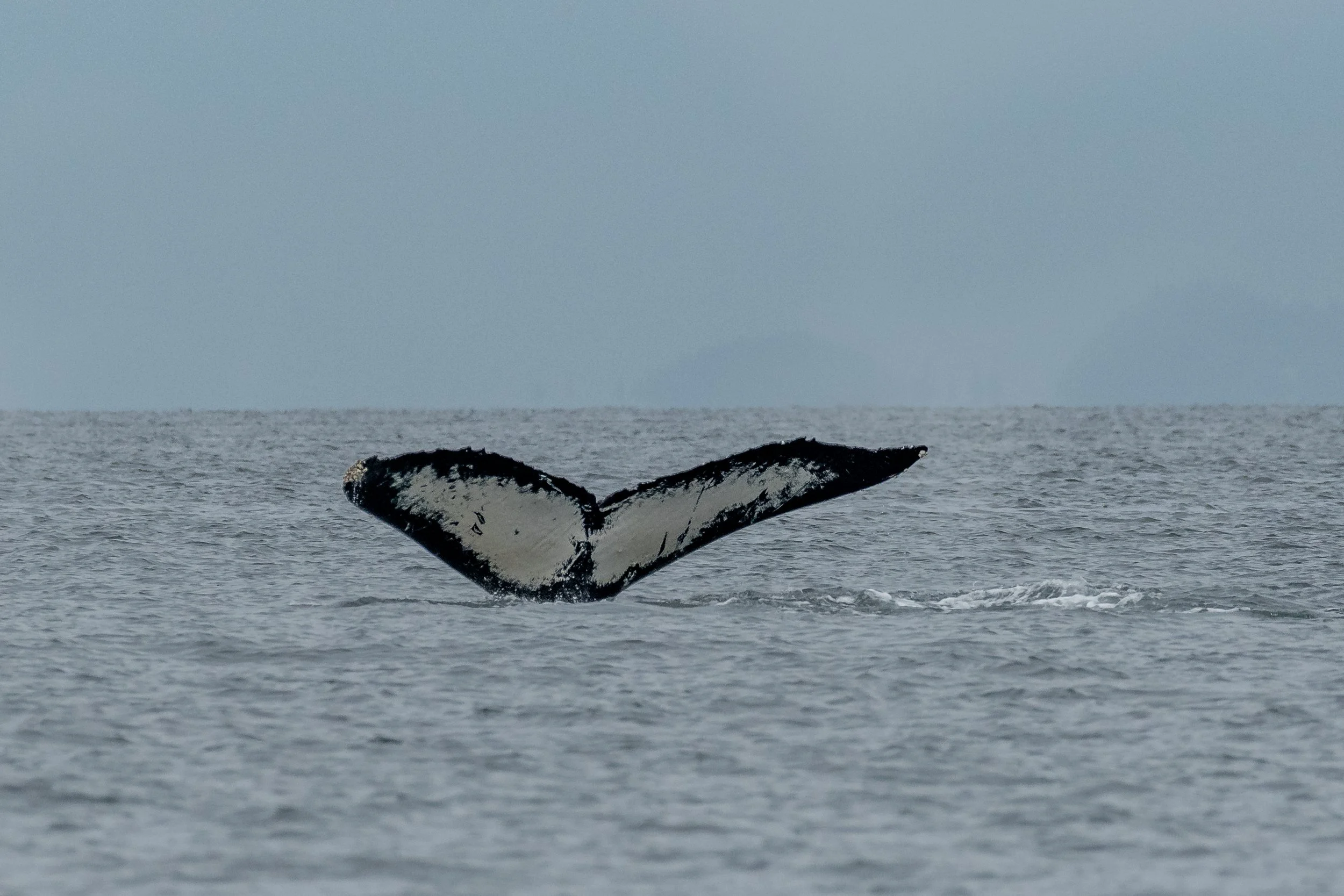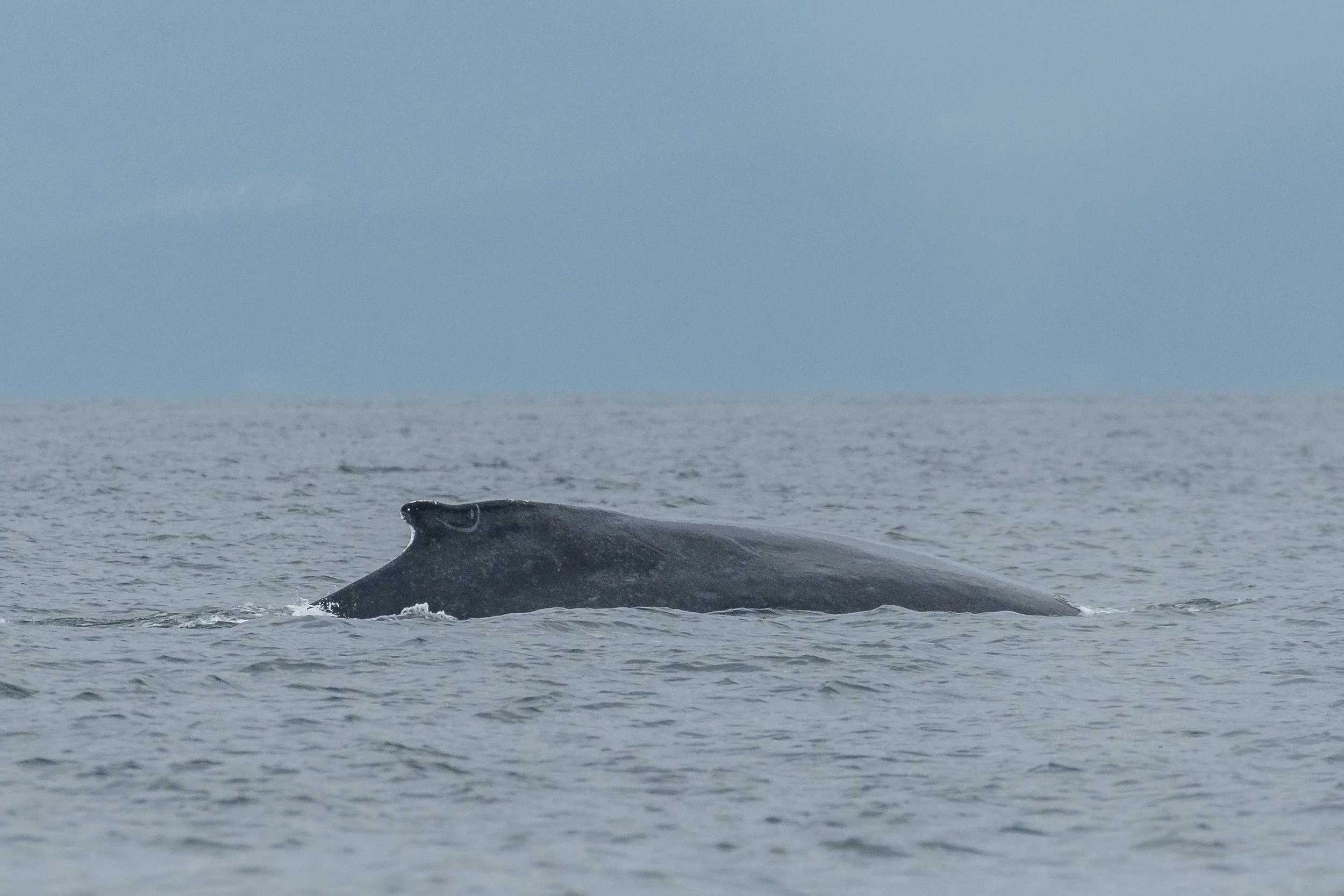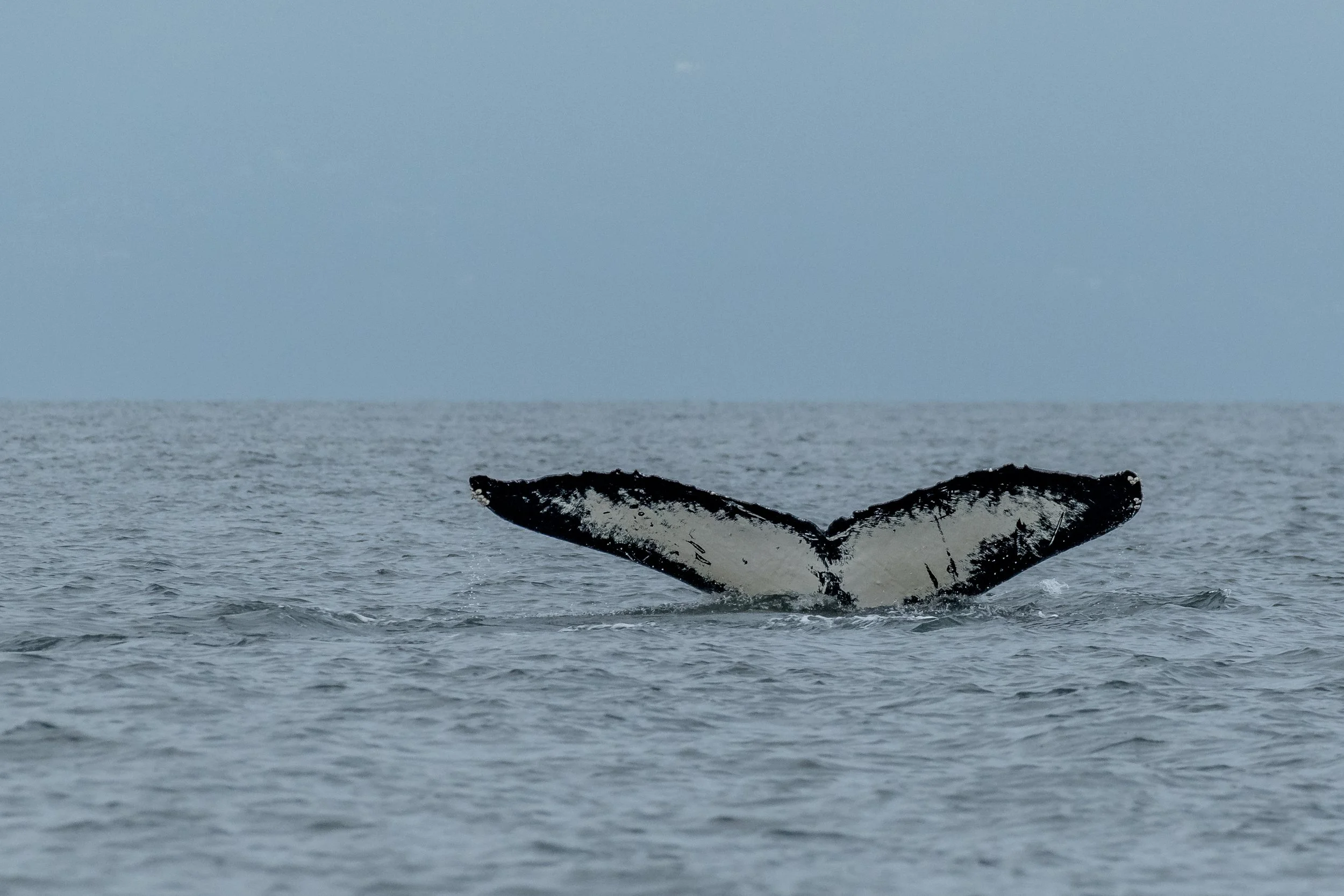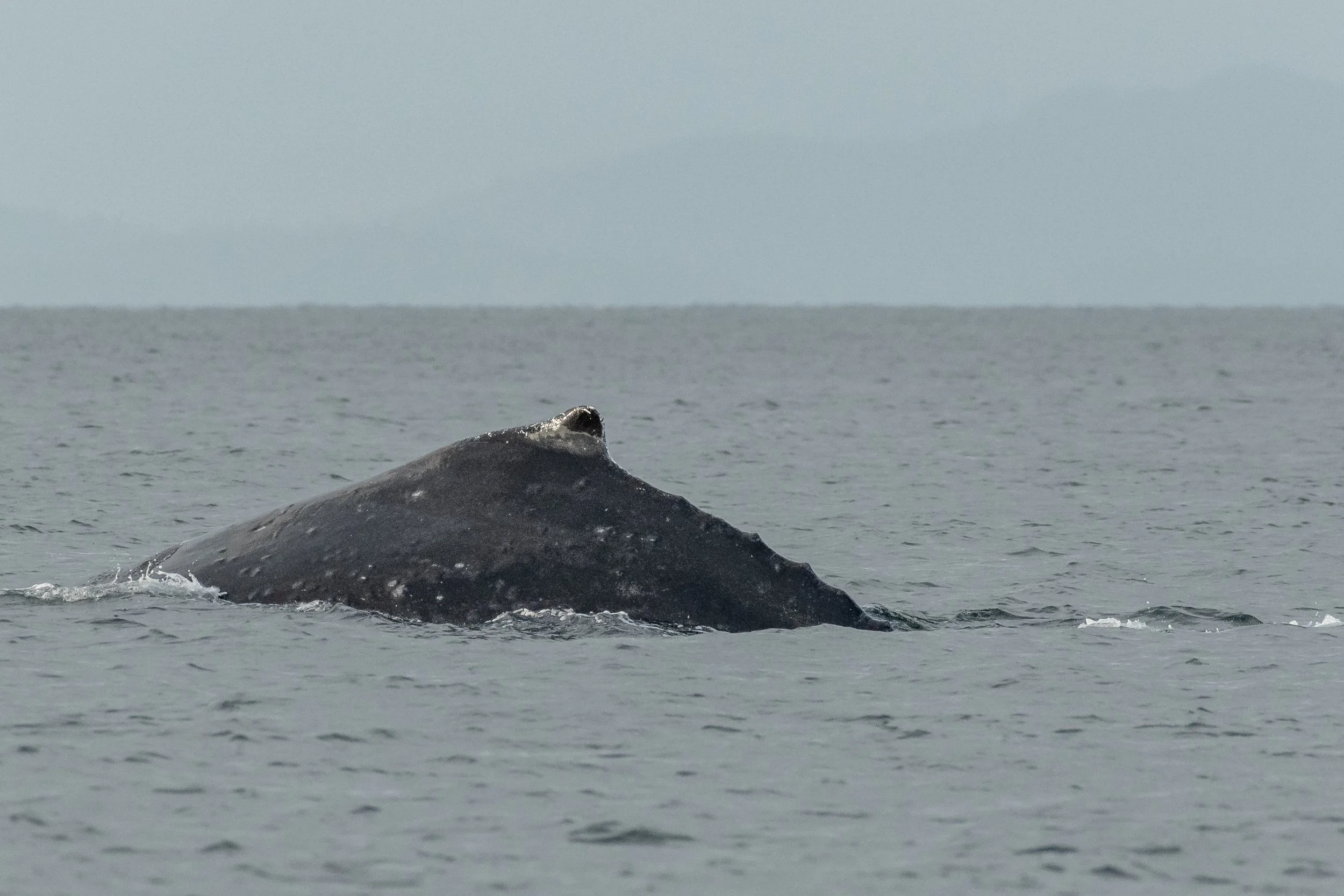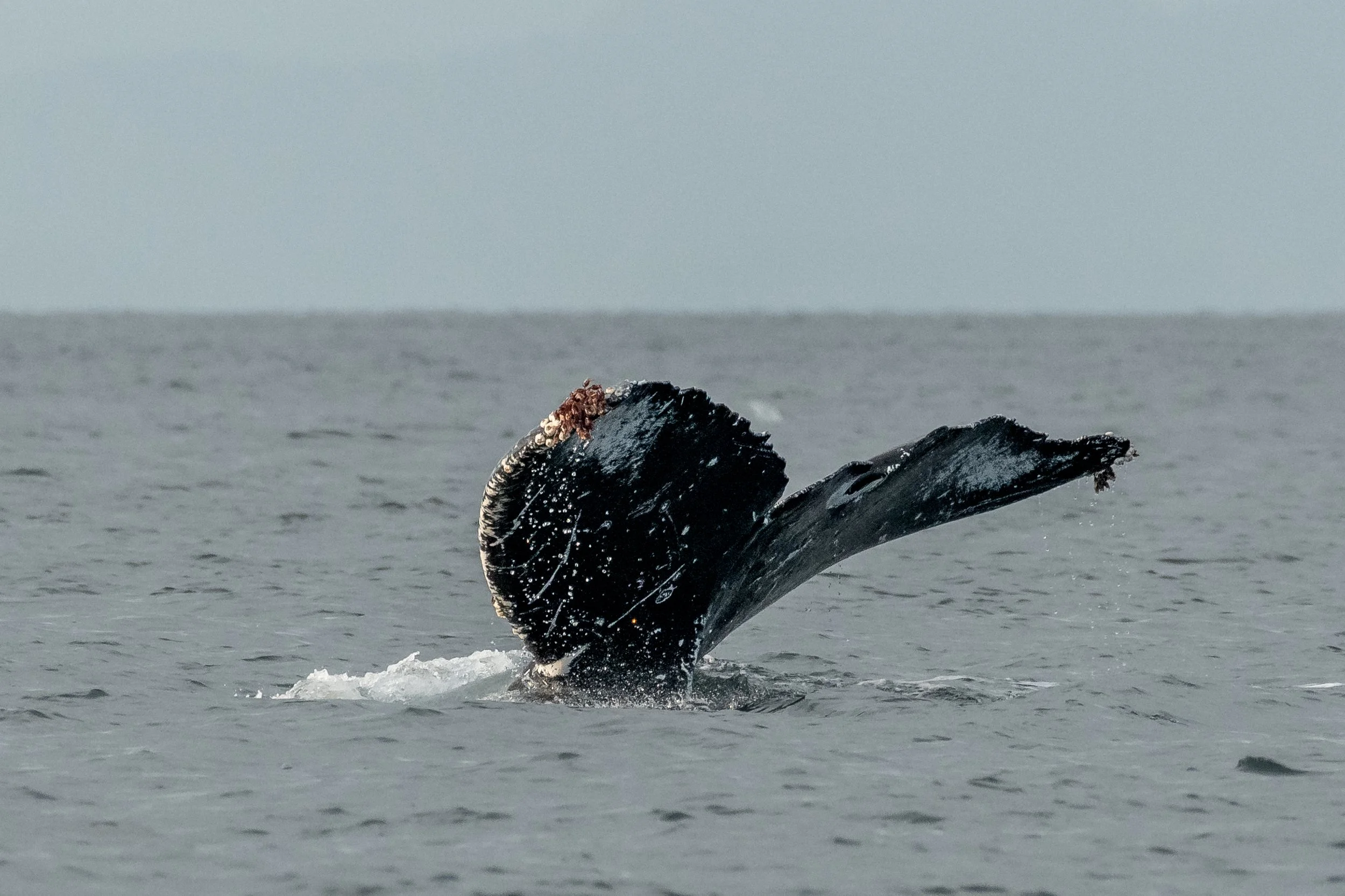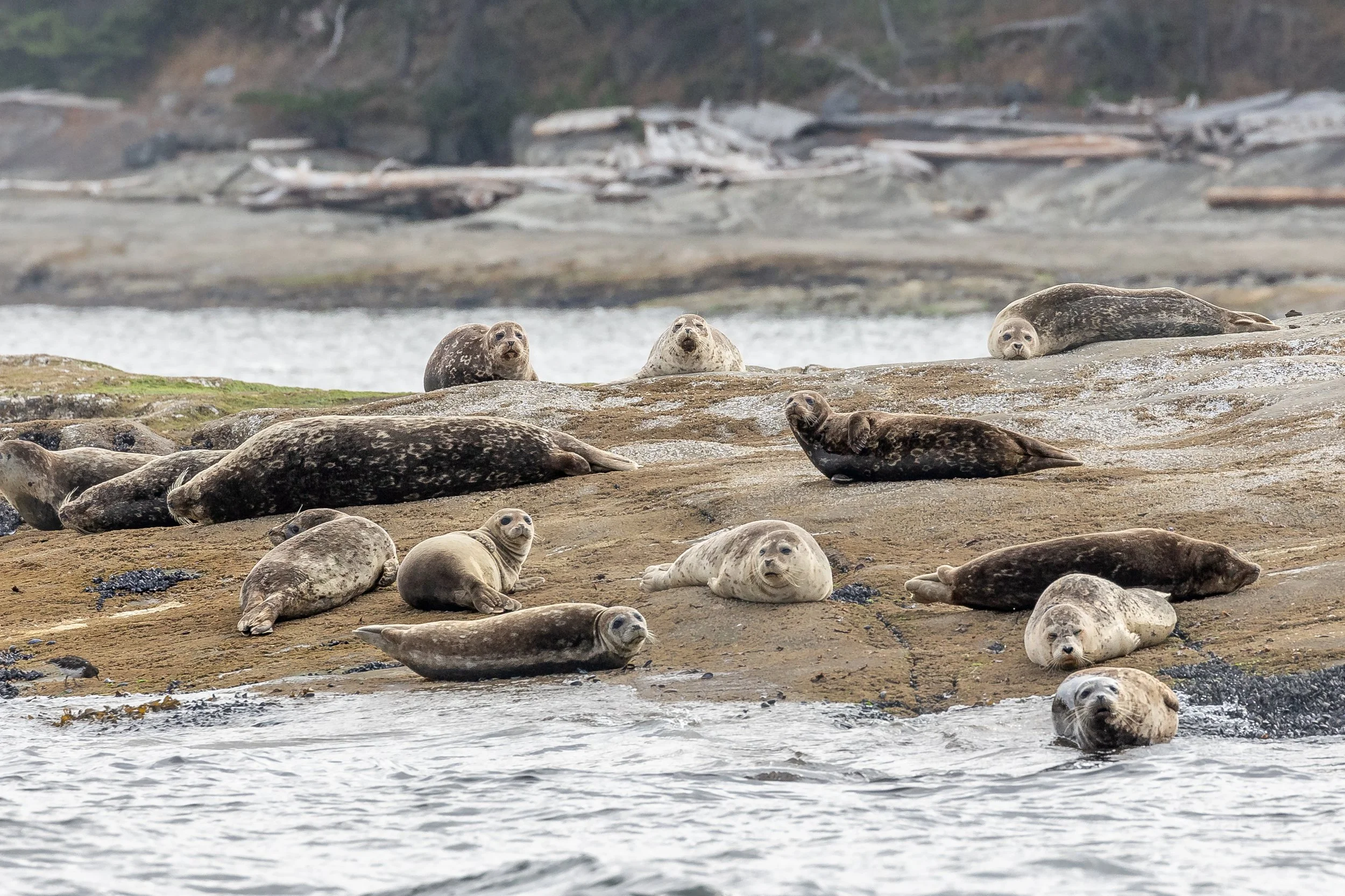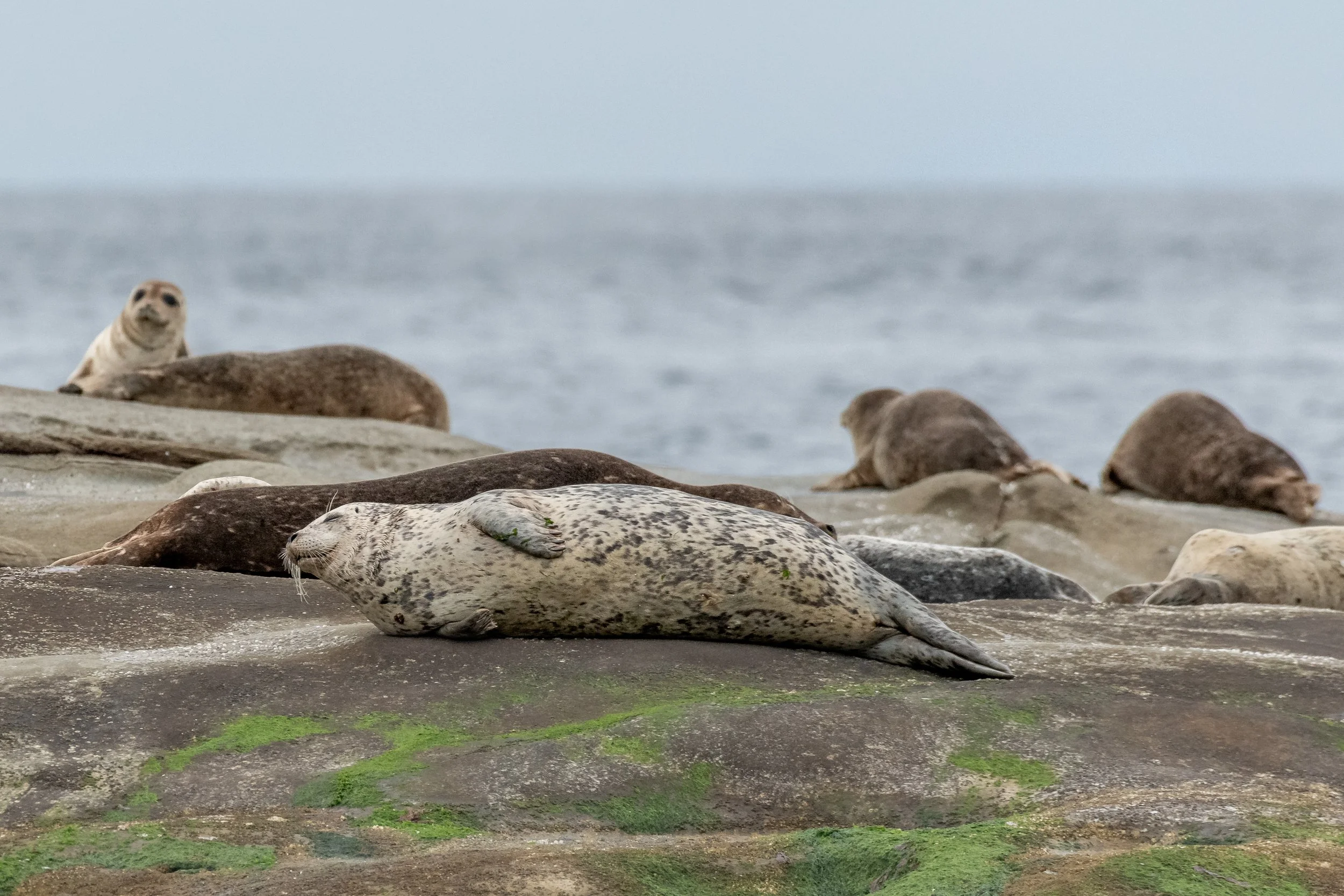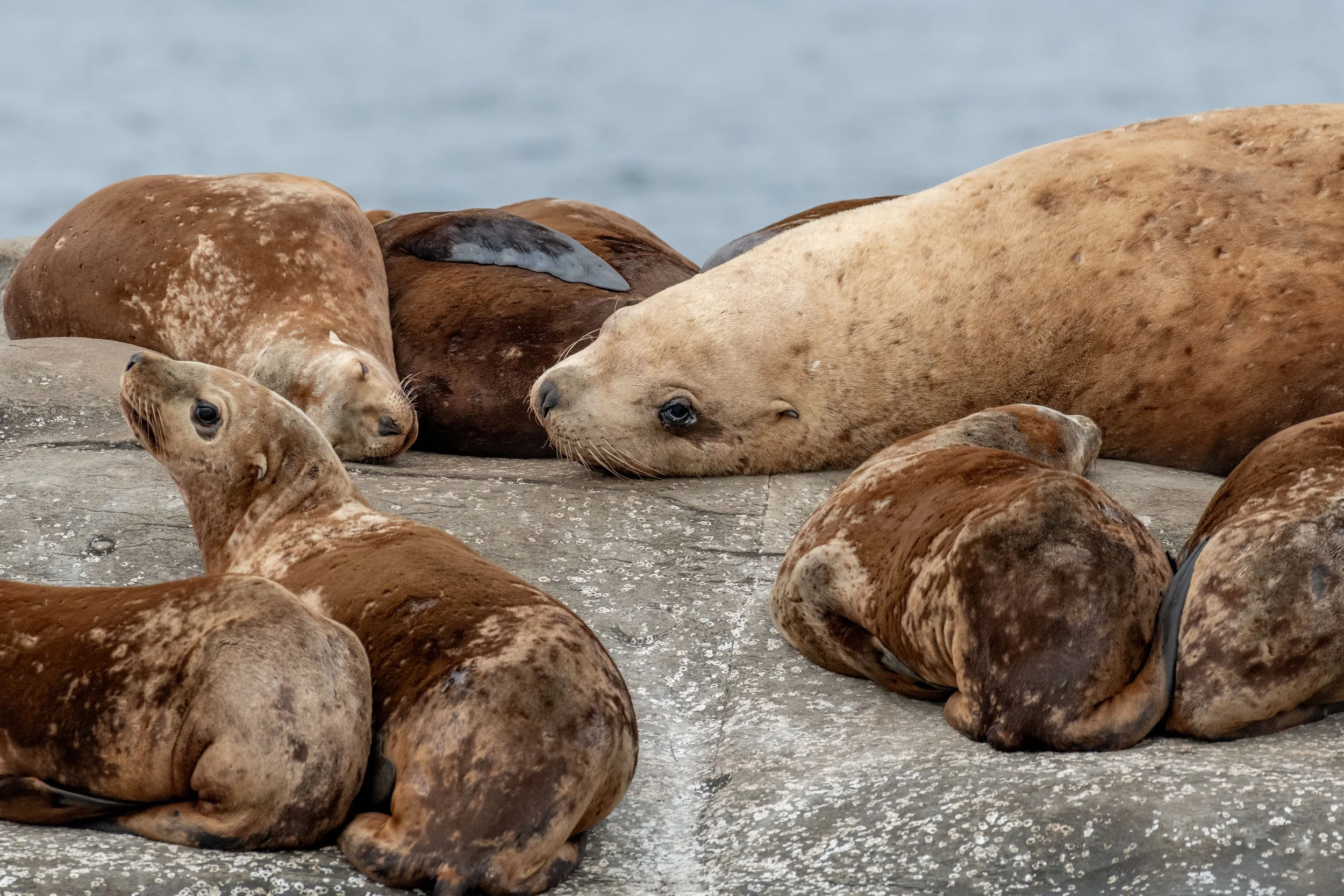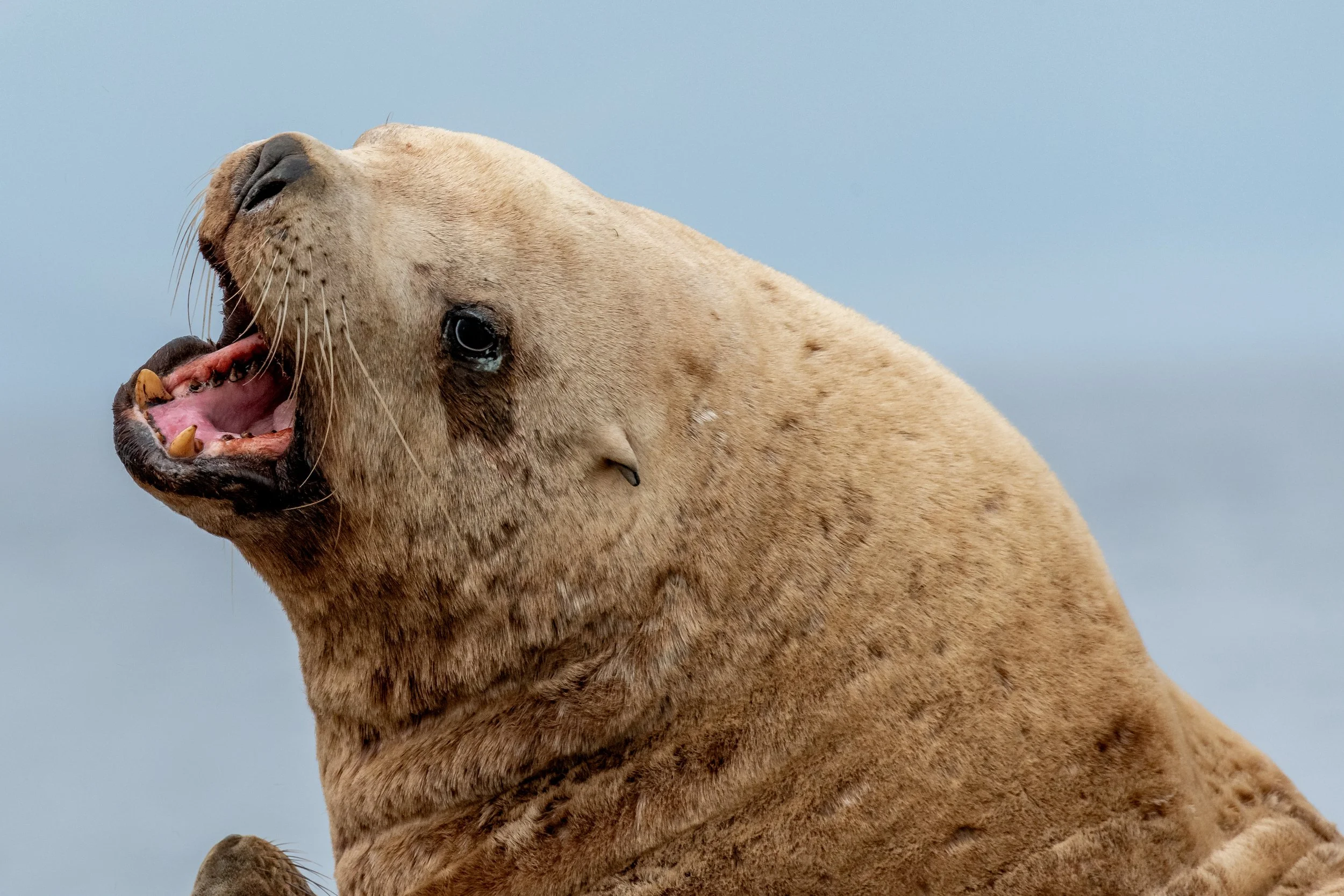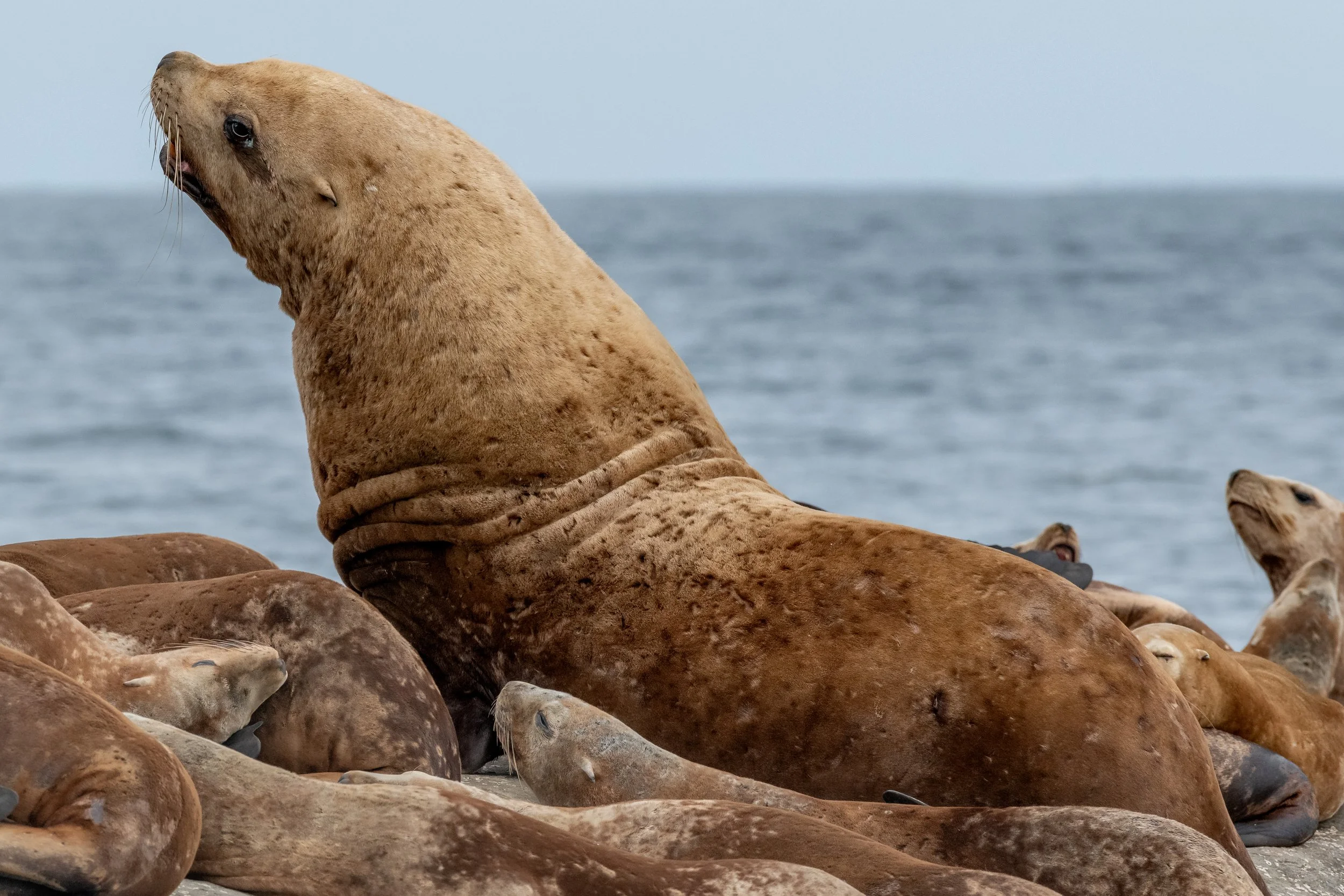September 3, 2023, 3:30 PM - The T038 siblings as well as Tempest, Snoopy, and Split fin
We were lucky enough to find both common species of whales during this tour, starting with orca! We ended up seeing two orca travelling together this afternoon, a sibling pair that seems to have split off from the rest of their family and are travelling solo. These two are:
T038C Borrowman (2008)
T038E Hocker (2017)
When we found these two it was a little hard to track them, as they kept zig-zagging back and forth whenever they came to the surface. This can be pretty common behaviour if they are scavenging for food beneath the surface. If something catches their attention they might move over to take a look or chase something unsuccessfully for a little while. It can be hard to tell what is really going on under the surface so a lot of it is left to speculation. Part of the reason for the poor visibility in our waters is due to the high productivity that we have. We have millions of tiny organisms known as plankton that are found in our water column. Each tablespoon of water in the Salish Sea is thought to contain a million of these. There are a couple of different types of plankton; Phytoplankton is usually the smallest and uses light to help it grow, similar to a plant. The other type, zooplankton is more animal-like and will feed on the smaller creatures. Technically, anything that isn’t strong enough to swim against the current is a planktonic animal, so that would include much larger critters like the jellyfish! Some plankton will spend their entire life cycle floating around in the water, but some will only spend part of it there. Things like crabs, starfish, sea urchins, and many other larger animals spend the first part of their life cycle as plankton, and they have some super iterating features during this time! Spikes, barbs, and tentacles are common sights on the plankton if you have a microscope.
This plankton is what allows our ecosystem to contain so many of our larger animals since having a strong base in the food chain is very important. Things like our transient orca would be feeding relatively high on this food chain, as they are Apex Predators, but things like the Humpback Whale would be feeding lower in the chain, even on the plankton itself. We were lucky enough to find some of the humpback whales during our tour this afternoon, with Tempest (BCX0837)and Split Fin (BCZ0298) travelling together and Snoopy (BCY0770) off feeding by himself.
It’s hard to believe that these 17-meter-long animals which weigh over 25 tonnes are surviving mainly off tiny organisms like plankton, but it’s true! Instead of having teeth like the orca do, humpback whales have specialized baleen plates which act as filters to help the humpbacks catch their food. They take in huge mouthfuls of water and anything swimming around in there and then push it against their baleen. The water gets through but all the delicious critters in the water get trapped and eaten by the whales! they will be after larger plankton and small schooling fish as their main prey source. Sometimes we catch the whales feeding like we did with Snoopy, and sometimes they’re just travelling as was the case with Tempest and Split Fin.
Our final stop along the tour this afternoon was at Stinky Rocks, getting to see the Steller Sea Lions in all their glory! There were lots of great photos from the trip captured by Marine Naturalists Aly Kohlman and Des Poier which can all be viewed below!
T038E Hocker. Photo by Aly Kohlman.
T038C Borrowman (front) and T038E Hocker. Photo by Aly Kohlman.
T038C Borrowman and T038E Hocker. Photo by Aly Kohlman.
T038C Borrowman - they have a unique white marking on their dorsal fin which helps to ID them. Photo by Aly Kohlman.
T038E Hocker. Photo by Aly Kohlman.
Even from this angle, you can see a tiny bit of T038C Borrowman’s white marking. Photo by Des Poier.
T038E Hocker. Photo by Des Poier.
Split Fin (BCZ0298)’s distinct 3-point dorsal. Photo by Des Poier.
Snoopy (BCY0770) has a big white gash on the top of his fluke which helps ID him no matter what side of his fluke we can see. Photo by Des Poier.
Snoopy (BCY0770) and one of the BC Ferries. Photo by Des Poier.
Tempest (BCX0837)’s fluke - while on the simpler side, she still has a couple of unique dots and scratches we can use to ID her. Photo by Aly Kohlman.
Split Fin (BCZ0298)’s beautiful fluke. Photo by Aly Kohlman.
Tempest (BCX0837)’s dorsal - the semicircle scar on this side of her dorsal can be used for IDing. Photo by Aly Kohlman.
Going for a dive. Photo by Aly Kohlman.
Tempest (BCX0837) diving. Photo by Aly Kohlman.
Tempest (BCX0837) fluking. Photo by Aly Kohlman.
Split Fin (BCZ0298)’s fluke. Photo by Aly Kohlman.
A side shot of Split Fin (BCZ0298)’s dorsal. Photo by Aly Kohlman.
Snoopy (BCY0770)’s spine is quite a bit knuckle-ier than the other two whales today, potentially indicating that he is an older whale. Photo by Aly Kohlman.
Snoopy (BCY0770)’s fluke. Photo by Aly Kohlman.
Harbour Seals on the rocks. Photo by Des Poier.
A very comfortable looking Harbour Seal. Photo by Aly Kohlman.
A massive male Steller Sea Lion amongst the smaller ones. Photo by Aly Kohlman.
He’s not too happy. Photo by Aly Kohlman.
You can see the Fatty mane that gives the Sea Lion his name. Photo by Aly Kohlman.
This big boy could weight up to 2800 pounds! Photo by Aly Kohlman.
The Steller Sea Lion cuddle puddle. Photo by Des Poier.
A beautiful sunset while returning to Nanaimo. Photo by Aly Kohlman.

